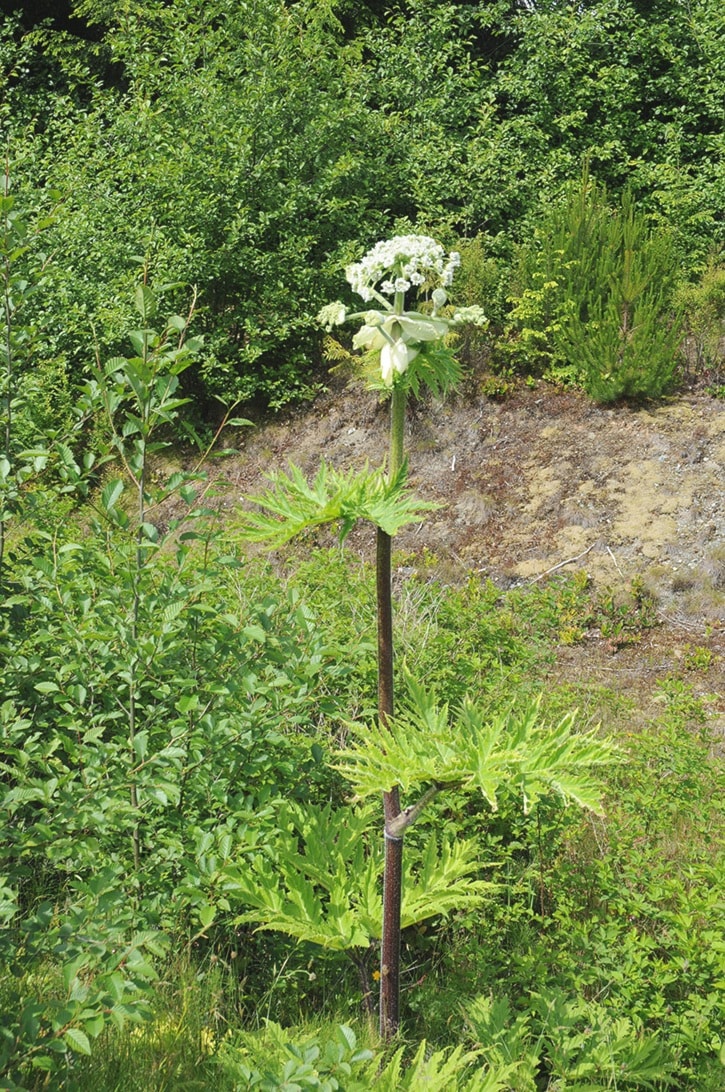Attempting to capture the interest of the public and government when it concerns invasive plants is like attending a molasses race in the arctic, and sometimes it even turns into a Clayoquot event with invasive plant-huggers.
To most folks there is no impact to their lives from invasive plants. Therefore, it follows that there is no apparent issue, and thus the plants can make massive inroads devastating native plant and wildlife populations before there is intervention.
Scotch Broom is one plant I wrote about in the early nineties — it was first noted on the grounds of the loran tower off the Rupert 400, seeds most likely transferred by vehicles from down-Island. Today we can see virtual forests of broom dominating the landscape and in time, as with down-Island scenarios, there will be an impact to forestry as broom will compete with newly planted conifer forests, creating a negative economic impact to our region.
Ironically, it wasn’t that long ago that government highway departments planted broom as a bank stabilizer because its deep roots promoted the distribution of this invasive species. Today broom still is not regulated by the B.C. Weed Control Act and won’t be until there is a serious negative economic impact. Thankfully there are stewardship groups working to eradicate local populations. As seeds lie dormant for years, it will take years to deplete the seed stock to destroy local populations.
Besides Scotch Broom and other invasive plants on the north Island there is a new kid on the block known as giant hogweed, which also crowds out native plant species and has a nasty disposition towards human health. Giant hogweed is a huge, toxic plant that can grow to a height of six meters or more and can burn skin and cause permanent blindness. This year I’ve run into two of the plants, one just south of the Seven Mile Landfill entrance and the other on a deactivated road near Marble River.
Contact with the weed’s clear sap can cause ugly burns that create large blisters leave black and purple scarring for life, resembling scars from a fire or chemical burn. And if even a tiny trace of sap comes into contact with your eye, it can cause temporary or permanent blindness. It’s not just exterior damage — chemicals in the sap known as furocoumarins are both teratogenic and carcinogenic, meaning that they can cause birth defects and cancer, a lethal mix.
Giant hogweed closely resembles our native cow parsnip. Besides its huge size, their stems are five- to 10-cm in diameter and are marked with dark, purplish-red blotches and raised nodules, and covered in coarse hair. They have deeply grooved compound leaves that can grow to 1.5 meters wide.
In both cases that I ran into so far this summer, they were along roadsides, and can be found adjacent to vacant lots, right of ways, and in areas considered moist to wet, near creeks and streams. Like many invasive species, once they take hold in a region they are difficult to eradicate, as a seed can lie dormant for seven years or more.
If you’re going to tackle a plant (when I returned to the Seven Mile location someone had already nuked it), you'll want to make sure your entire body — including your eyes — is protected. It’s the flower heads and root stalk that carry the seeds and perennial buds to reproduce that need to be eradicated to prevent reproduction. Removal of your safety gear will be just as important, as it will more than likely be covered in sap.
To date, there is no provincial strategy in place to stop its spread, and if it’s allowed to established itself, like in many regions in the Southern Interior of B.C., outdoor adventure will take on a whole new meaning.
Lawrence Woodall is a longtime naturalist who has spent much of his life in the outdoors.
